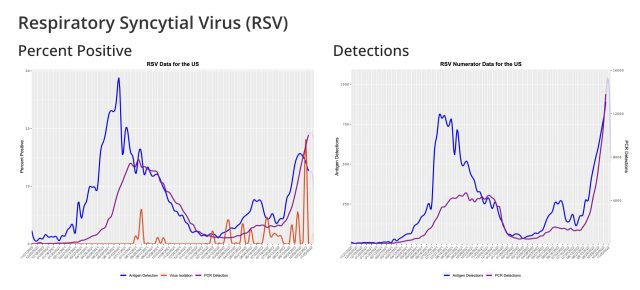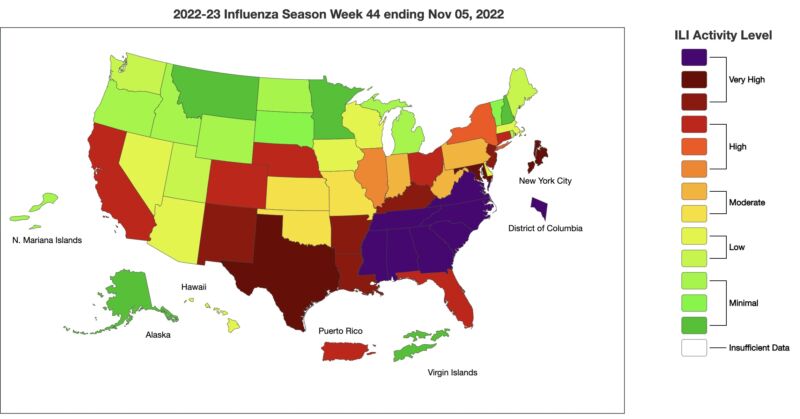-
 chevron_right
chevron_right
Record number of parents miss work as respiratory illnesses spike in kids
news.movim.eu / ArsTechnica · Wednesday, 16 November, 2022 - 23:34 · 1 minute

Enlarge / Parents work on their computers while their son entertains himself at their home in Boston in April 2020. (credit: Getty | Boston Globe )
Respiratory illnesses are raging this fall, slamming children particularly hard. Cases of influenza-like illnesses are off to a startlingly strong and early start this season. RSV—respiratory syncytial (sin-SISH-uhl) virus—continues to skyrocket. A stew of SARS-CoV-2 variants is still simmering in the background. And the rabble of usual cold-season viruses, such as rhinoviruses and enteroviruses, is also making the rounds.

RSV national trends. (credit: CDC )
With the surge in infections, children's hospitals around the country have reported being at capacity or overwhelmed, as Ars has reported before. But another effect of the crush of viruses is a squeeze on the workforce. As The Washington Post first reported Tuesday , the US broke its record last month for people missing work due to childcare problems—such as having children home sick and childcare facilities or schools shuttered due to staffing shortages and sickness.

Outpatient respiratory illness visits. (credit: CDC )
In October, more than 100,000 employed Americans missed work for childcare-related problems, according to data from the US Bureau of Labor Statistics . That is more missing workers than in any other month in recent records, including the entirety of the COVID-19 pandemic, during which many childcare facilities and schools closed down for extended periods. At the height of pandemic-related shutdowns in 2020, the number of Americans missing work for childcare problems only reached the low 90,000s.


